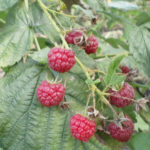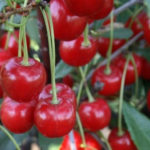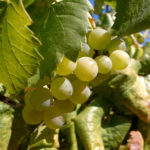Lorkh potato variety
The Lorkh potato is an old medium-late-ripening potato variety (Solanum tuberosum) that enjoyed immense popularity until the mid-50s of the last century and has not yet been forgotten by gardeners and gardeners. Bred by A.G. Lorkh at the Moscow Regional Experimental Station in Korenevo (now the A.G. Lorkh Institute of Potato Farming) in 1922. Obtained by crossing the varieties Svitez and Smyslovsky. Included in the state register of the Russian Federation in 1931. Zoned in the Ural, Lower Volga, Middle Volga, North Caucasian, North-West, Central and Central Chernozem regions of Russia.

In the 1960s and 1970s, this variety occupied up to 700 thousand hectares on collective and state farms, but was later forgotten and practically lost. Only recently, thanks to modern biotechnology, it was revived.
Lorkh works well on all types of soil, but yields poor yields when grown under straw. The ripening period, starting from the day of planting in the ground, is 100 - 120 days.
Plants are tall, branched, vigorous, well leafy. Leaves are medium in size, light green in color, slightly dissected; ivy is common. The inflorescence is abundant, spreading. Peduncles and calyx are green. Anthers are orange. Corolla reddish-purple, petals with white tips. Long flowering. Berry formation is rare.
Tubers are rounded, large, light beige in color, with a smooth skin. Peeling is observed at the top of the tuber. The pulp is white, on the cut has a greenish-yellow tint. The eyes are small, superficial, located over the entire surface of the tuber. The sprouts are reddish-purple. Tubers in the nest are located compactly, in the amount of 12 - 16 pieces.
The mass of marketable tuber is 90 - 120 grams. The yield of marketable tubers is 250 - 350 kg / ha. Productivity per bush - up to 1 kg. Marketability 88 - 92%.
Lorkh potatoes are distinguished by their high plasticity to cultivation conditions and resistance to viral diseases. Medium resistant to ring rot, late blight of tops and tubers. Not affected by rust. But it is weakly resistant to cancer (pathotype 1), common scab and golden potato nematode. Still, at elevated soil temperatures, it is prone to overgrowth (1)... Poor drought tolerance. With a lack of potassium and phosphorus in the soil, the tubers become elongated.
Table variety with excellent taste. Suitable for cooking potato pancakes, mashed potatoes, crispy potatoes and processing into starch (starch content 15 - 20%, dry matter - 23%). Boiled tubers are crumbly. The pulp does not darken during cooking. Keeping quality is good - tubers are stored in the cellar almost until the new harvest.
1. Potato overgrowth is a disease of a physiological nature, manifested in the fact that young tubers in the first year form either underground shoots (stolons) with small tubers sitting on them, or directly small tubers formed from the eyes of larger tubers (detachment).








